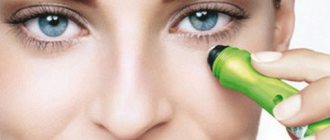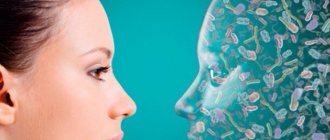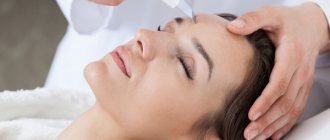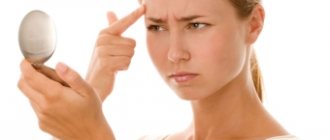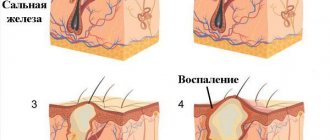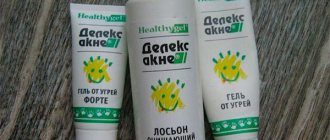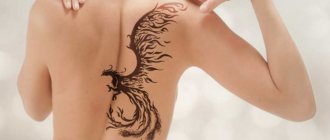Safety precautions
Some people think that a pimple that has popped up can be removed by squeezing it. However, mechanical opening can have dangerous consequences. It is especially dangerous to touch pimples located in the nasolabial area, since this area has an intense blood supply. And the infection, once in the vascular bed, can cause meningitis, thrombosis and even sepsis.
Do not assume that such fears are excessive - it is always better to play it safe and think about your health.
It is not recommended to squeeze out pimples with clean hands and after treating with an antiseptic. And at the stage of infiltration, when there is simply a dense nodule without content, this will not bring any effect at all, except for increased redness and pain.
You should never forget about safety rules. Even a common pimple can become a source of danger if handled incorrectly.
Medicines
In cases where a pimple pops up on the face, many people count on quick cosmetic results. To do this, it is recommended to use products with anti-inflammatory, antiseptic, antimicrobial, and drying effects. The following will help reduce local redness and swelling, and therefore make acne less noticeable:
- Iodine solution (boric, salicylic alcohol).
- Ichthyol and zinc ointment.
- Tea tree oil.
- Aloe juice.
- Herbal decoction (chamomile, calendula, birch bark).
These products are used as a spot application to the affected area or as a compress. You can also wash your face with herbal infusions and decoctions (as well as tar soap), which will only provide a more pronounced result. If pimples appear, it is also recommended to make a mask from blue clay or activated carbon, which have excellent adsorbing properties.
If the inflammation has just begun, then you can use such a simple technique as applying a piece of ice to the reddened area for a couple of minutes. For acne, hardware procedures are also indicated, for example, darsonvalization or various cleansing techniques. However, they are carried out only in specialized salons.
A ripe pimple that is about to burst can be helped to come out: the skin is treated with an antiseptic, after which the cover with the contents is carefully removed with a cotton swab. If too many acne appears on the face, it is better to consult a doctor to find out the cause of what is happening and complete treatment.
Medications that stop the inflammatory process at the initial stage will help remove a popped pimple from the face.
What can and should be done if an inflamed pimple pops up?
Basic recommendations on what to do if a pimple pops up:
- Cleanse your skin properly . We recommend using the Kholinka lithobiocomplex with medicinal herbs for oily problem skin. It can also be applied directly to the pimple for a few minutes.
- If a pimple pops up, we recommend that you lubricate it with tea tree essential oil or a mixture of tea tree and lavender . These 2 oils are the only ones that can be applied directly to the skin. They perfectly relieve inflammation and prevent the growth of bacteria on the skin.
- Compresses with juice or aloe leaves , or crassula or crassula leaves are a great way to deal with a popping pimple You can use aloe gel without alcohol
- If a pimple pops up, compresses made from chamomile flowers, calendula, and birch bark .
- To combat pimples, you can rinse your face with infusions of chamomile, calendula, and green tea.
- If the pimple is large and painful, then you can try to draw out its contents using compresses for 2 hours with Vishnevsky ointment or ichthyol ointment . They have an antiseptic effect and promote blood flow to tissues for speedy healing
- Zinc pastes help regulate sebum production. It can only be applied pointwise to the inflamed element. But we do not recommend using salicylic-zinc paste, it dries the skin very much
- At night, we can recommend using night mineral powder with green tea and zinc
- Clay masks are also good for relieving inflammation if a pimple pops up. However, do not forget that the clay should not be dried on the skin. It’s good if you add cajuput oil to the mask
- Use products to normalize skin microflora, for example, bioseptin .
- If you have the opportunity, it would be good to use the Darsonvalization procedure in the salon (100-300 rubles), or at home if you have a Darsonval device. Darsonval significantly accelerates healing due to increased blood microcirculation, has an antipruritic and analgesic effect, and reduces inflammation. Improves skin nutrition and promotes its restoration. But if you have pustules, you should not use darsonval. It should also not be used on the area around the lips and under the nose. Those. If a pimple appears on your lip or under your nose, it is better to refrain from using Darsonval. In these areas, it can cause activation of the hair follicles. If you constantly experience inflammation, we recommend purchasing Darsonval for home
- If the inflamed pimple has matured and begun to get rid of its contents on its own, then here you can gently help with your hands using a cotton swab or cotton pad . The main thing is to keep your face and hands clean. In this case, you can precisely use disinfectants before removing the remaining pimple.
- If you have a pimple, do not forget to also follow the general recommendations for caring for oily problem skin
- And most importantly: acne is a signal that not everything is okay with your intestines, microbiome, or nutrition . After all, this is the basic root cause of acne. First of all, eliminate sugar, dairy, wheat, junk food, most will already see very good results
Cosmetics
It is prohibited to use conventional cosmetics for acne - it only clogs the pores, contributing to increased inflammation. A pimple that suddenly appears on the face can be hidden using other means:
- Green corrector.
- Mini patches.
- Mineral powder.
These products contain not only camouflage, but also medicinal components (for example, green tea extract). You can apply them both at night and before going outside. To powder the affected areas, it is better to use a separate brush, which is then thoroughly washed.
A big pimple popped up: how to hide it
Any inflammatory processes on the face are a contraindication to the use of conventional decorative cosmetics.
In such cases, it is especially not recommended to apply foundation to the skin, since products of this kind clog pores and provoke an exacerbation of inflammatory processes.
To disguise a pimple, it is recommended to use the following cosmetics:
- Green corrector. There are special correctors on sale with green tea extracts that not only effectively hide redness, but also stop the inflammatory process.
- Mineral powder. It must be applied over the corrector, making the defect completely invisible. In addition, the mineral product will not cause any harm to the skin; on the contrary, powder with a natural composition will fight inflammation.
If one pimple pops up, it is better to avoid using a sponge when covering it up, and use a separate brush to treat the area of inflammation. After applying makeup, all tools must be thoroughly washed.
If more than 10 pimples appear on your face and cannot be treated at home, you should consult a dermatologist. He will help you find out the cause of acne and prescribe proper treatment of the disease with the help of medications.
Prevention
Pimples that regularly appear on the face can be eliminated with preventative measures. First of all, you should determine their source (hormonal surges, the influence of external factors, demodicosis, etc.) in order to influence the root of the problem. Of course, it is worth paying attention to proper nutrition and skin care (taking into account its type).
Many pimples appear due to poor personal hygiene, so the face should always be clean and should not be touched with unwashed hands. Preventive measures also include a set of cosmetic procedures performed on a regular basis:
- Steam baths with herbal infusions.
- Using clay masks.
- Washing with tar soap.
- Additional treatment with lotions.
- Selection of cosmetics with green tea and tea tree extracts.
General health methods in combination with the correct effect on the skin of the face give very good results. And in situations where acne appears quite often, the need for complex correction - therapeutic and preventive - increases.
Preventive measures: general and specific will help prevent the appearance of acne.
What to do if a pimple pops up - the answer to such a question is not as simple as it seems. When starting to eliminate an unpleasant defect, you should take into account many factors that influence the result. But better efficiency, of course, can be achieved with the involvement of a specialist.
Causes of acne on the face, types of acne
So, the most common cause of acne on the face is hormonal changes in the body. Of course, adolescence is the most striking example of this. In a person’s life, this is the period of greatest hormonal activity. A hormonal storm rages inside the body, and outside we see its consequences - a roughening voice, changing body proportions and, alas, rashes. Few people manage to avoid this scourge. Even if growing up is normal and the skin is quite thin and problem-free, it is impossible to go through puberty without a single pimple - they will definitely appear, albeit in small quantities.
Similar work of the hormonal glands also occurs in women during pregnancy and a certain phase of the menstrual cycle (and this can also be accompanied in some cases by acne) or with certain endocrine problems in adults. Even newborns can have acne conditions. They also have a hormonal nature, even a separate name - hormonal crisis. In addition, some medications, specific work habits, even inhaled air - all this can become a pathogenic factor for acne.
Actually, the word “pimple” is not exactly a medical term, or rather, its meaning is too vague. Experts distinguish the following types of acne:
- Comedo. This is not even a pimple, but its initial form or the so-called white pimple. A comedon is a sebaceous plug that clogs a pore, causing future inflammation. In everyday life, comedones are also called blackheads.” Black color is a sign of oxidized sebum on the surface of the comedone. If a plug has formed in the upper part of the pore, then it is an open comedon; on the surface of the skin it appears as an easily removable tubercle filled with liquid. A closed comedon is, accordingly, localized deeper in the pore. On the skin it appears as a dense white ball, a wen. If such a comedone gets infected, a papule develops.
- Papule. This is already a full-fledged pimple, it is inflamed and causes pain on palpation, which is why its color can vary from red to bluish. When pressed, it turns pale, then becomes filled with blood again.
- Pustule. May be primary. Capable of emerging from a papule. It differs from the latter in the presence of purulent contents, which emerge on the surface of the pimple as a white dot. Papules and pustules have the common name “red pimples”.
- Nodular cystic acne. Severe form of pustules, which are no longer single, but form conglomerates penetrating deep into the dermis; they are connected by fistulous ducts and are quite painful. They require serious systemic treatment.
- Lightning acne. The most severe form of acne is accompanied not only by large areas of acne, but also by hyperthermia, muscle and bone pain, and changes in the leukocyte formula of the blood. Requires immediate medical attention.
Depending on the type of rash, there are four degrees of acne severity:
- First degree. One area of the face is affected (for example, the forehead or chin). Rashes in the form of comedones, occasionally - papules and pustules.
- Second degree. It differs from the first degree in the number of rashes - a large surface of the face is affected, and there are acne on the body. The qualitative composition of acne is the same as in the first level disease: comedones, single papules and pustules.
- Third degree. In addition to comedones, there are many papules and pustules, the inflammatory process is pronounced, and hyperemia (redness, itching) of the skin is possible. Post-acne marks.
- Fourth degree, the most severe. Large spherical pimples (more than five millimeters) and bluish-red color penetrate deep into the layers of the dermis and leave deep atrophic scars (similar to pits on the skin).
Table 1. Classification of acne (causes and types)
In addition to these factors, the degree of acne can also be determined by skin genetics. The production of sebum and the possibility of developing seborrhea (hyperactivity of the sebaceous glands) depends on the thickness of the skin of the sick person.
Table 2. Intensity and area of acne spread for different skin types during puberty
Prevention and control of the first signs of acne
When we talk about acne prevention, we, of course, mean the first two mild degrees of acne. Under no circumstances try to deal with boils, nodular cystic or fulminant acne on your own - this can be fraught not only with serious skin problems, but also with sepsis in especially severe cases.
However, if we are talking about mild acne lesions, treatment, which essentially boils down to the prevention of the disease, can be independent. Of course, this should be done correctly, because any irritation of the acne will indicate their growth. Cosmetologists categorically prohibit any unprofessional squeezing of pimples or comedones - this can lead to the formation of new, more complex pimples, as well as the formation of atrophic scars, the fight against which is much more difficult than with mild stages of acne, which can be cured without consequences for the skin. In general, experts recommend:
- review your diet during the period of highest activity of the sebaceous glands, that is, exclude fatty, sweet foods rich in simple carbohydrates;
- pay more attention to facial and hand hygiene. This will contribute, if not to the complete disappearance of acne, then at least to their non-spreading due to external factors;
- regularly use antiseptic masks and creams that protect the pores from the penetration of dirt, dust particles and bacteria, which, in fact, trigger the inflammatory process.
